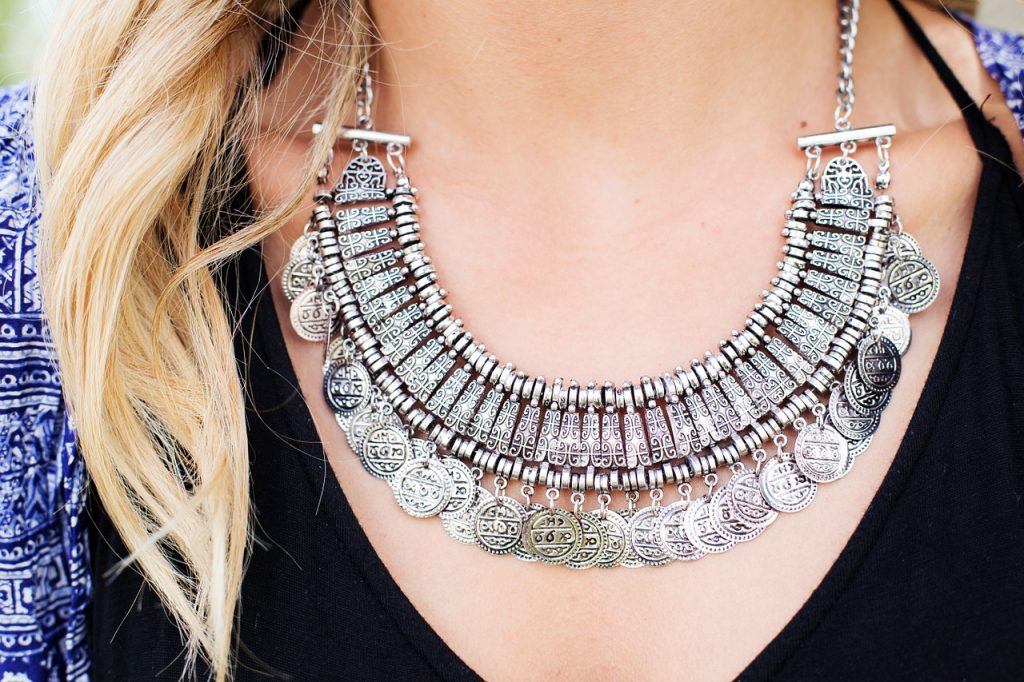Wearing the right piece of jewelry is an excellent way to finish off the desired look. And even non-fashionistas wear jewelry. They use it to express their personality or instantly convey messages.
Nothing says, “I’m taken” as a wedding ring. Or screams “rebel” like a tongue barbell. But if your accessories are causing all sorts of skin complications, the effect is wasted. Instead of feeling cool and confident, you’re simply irritated and uncomfortable. Here are some of the issues to avoid.
Allergic reactions
Jewelry today is often made out of gold or silver. Over the ages, these metals have come to be preferred not only for aesthetic value but for how inert they are. They are stable and don’t tarnish or otherwise display signs of wear and tear in their pure form.
Gold and silver, on their own, very rarely cause any allergic reaction. However, they are often mixed with other metals in a process called alloying, especially when making jewelry. This is desirable to offset their excessive natural softness and malleability.
One of the metals commonly used in forming such alloys is nickel. And allergic reactions to nickel are much more common than those to gold or silver.
Naturally, this becomes a big problem when you wear jewelry containing nickel in the alloy. It will be in constant contact with your skin and may lead to a variety of symptoms. You could develop dry patches or discoloration, an itchy rash, or even blisters.
Nickel allergies can’t be cured. Your doctor can prescribe the appropriate medication to treat skin irritation, but the only long-term solution is prevention.
Switch your preferred form of jewelry to a non-metal material, such as men’s rubber bracelets or silicone rings for women. If you must have metal, try a higher-grade alloy like 18- or 24-karat gold or sterling silver. Metals such as titanium or platinum can also work. To be certain, check the exact composition with your supplier.
Greenish skin
 Sometimes, you might develop a green skin tone after wearing certain pieces of jewelry. Though this can be rather alarming, it’s actually not as bad as a real allergy to metal.
Sometimes, you might develop a green skin tone after wearing certain pieces of jewelry. Though this can be rather alarming, it’s actually not as bad as a real allergy to metal.
The green skin phenomenon is caused by the presence of the metal copper. Copper belongs to the same family of metals as gold and silver but is less inert. Exposure to the elements will cause it to form a greenish patina. In turn, this rubs off onto your skin.
It’s harmless and can be washed off, but green skin is an unpleasant side effect you’d probably want to avoid. The same solution for nickel allergies works here. Copper jewelry is often inexpensive, so higher-quality pieces are less likely to use it. You might want to avoid rose gold jewelry, though. That alloy uses copper to give gold a reddish tone.
But if you don’t want to switch to another material, you can also try a simple hack. Apply a coat of nail polish to the area in contact with your skin, and it will effectively shield your skin from the patina. You’ll have to re-apply this film periodically, though, and it might work better for some pieces (rings) than others (necklaces).
Piercing complications
Not all jewelry is slipped onto the fingers or around wrists and necks. Many people prefer to have their skin pierced to adorn themselves in style. And apart from the dangers of the piercing procedure itself, those pierced sites may be at a higher risk for skin issues.
These complications certainly include nickel allergies or green skin since earrings or studs can also contain such metals. But the very nature of piercing causes problems.
The body views piercing as a wound and responds accordingly. Pierced sites risk infection. They can also trigger the formation of keloids, a sort of scar tissue.
Even after the wound heals, your skin will continue to grow in that area. This may lead to an effective rejection or ‘pushing out’ of the jewelry. Alternatively, the skin can attempt to grow over the jewelry. If you miss this early and bring it to the attention of a professional, it can result in embedding and require surgical removal.
Avoidance remains the best policy when it comes to skin complications stemming from piercing. But if you’re set on having a part of your body pierced, you need to have it done at a professional piercing salon in a sterile environment. And after the procedure, make sure that you follow the guidelines for subsequent care and maintenance of the pierced area.



